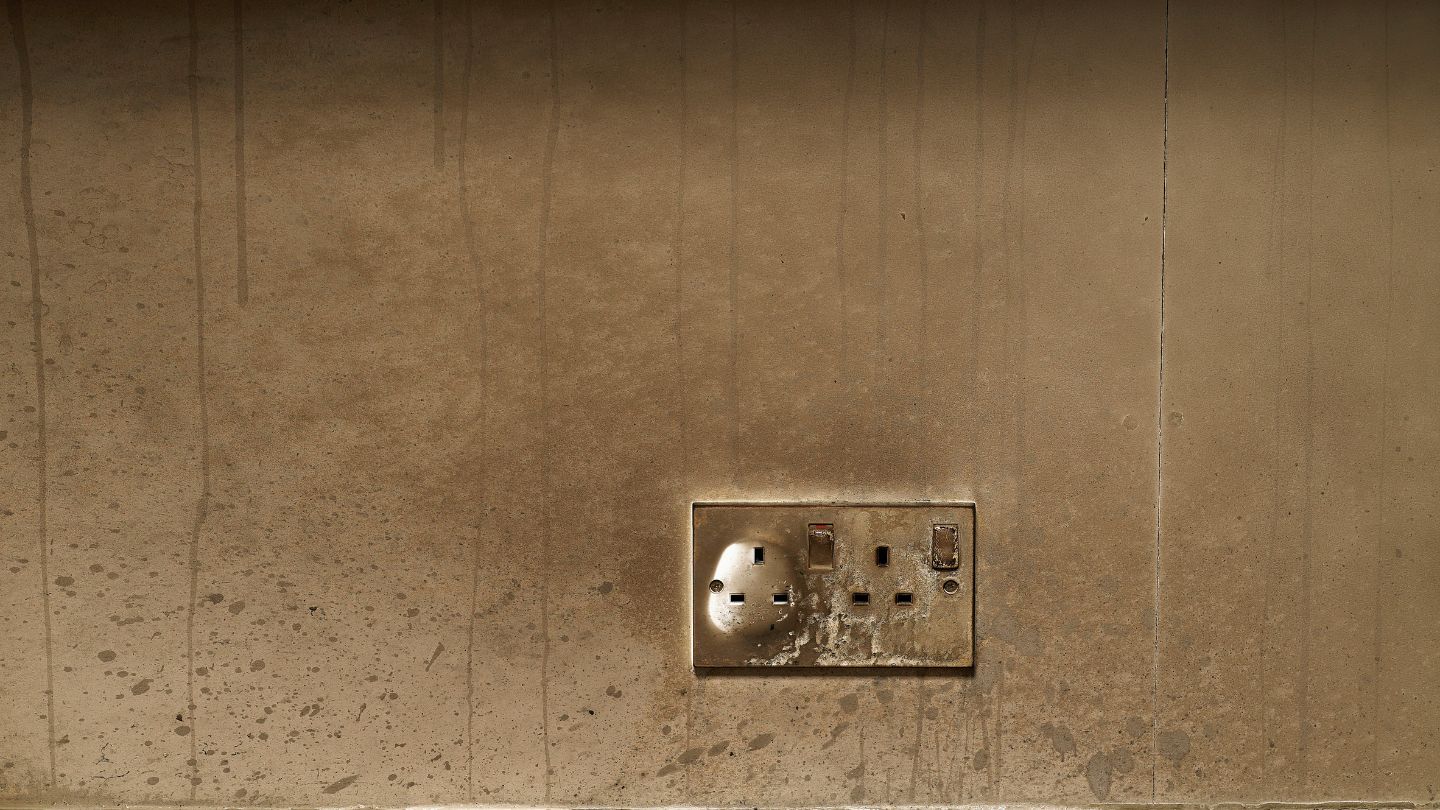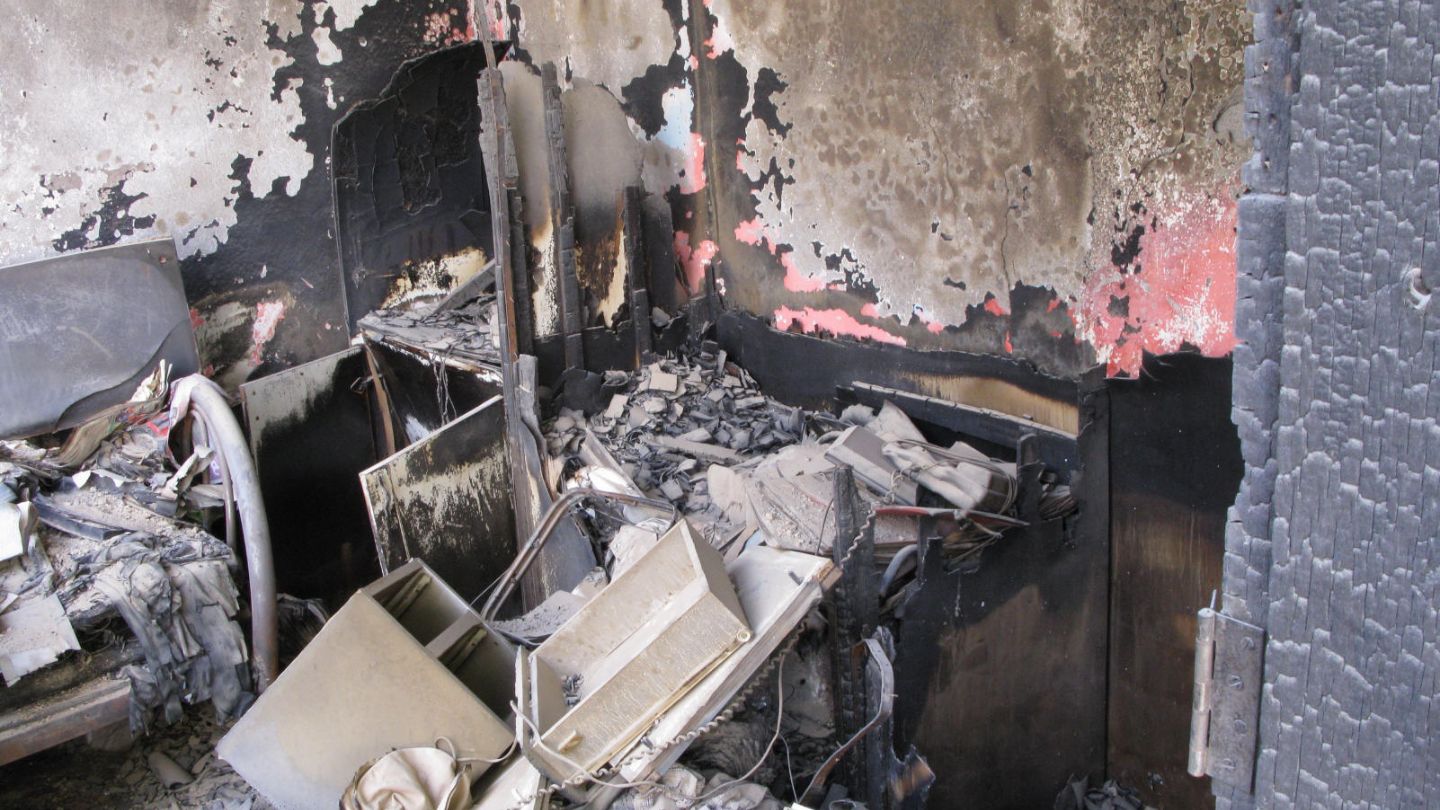Fire damage brings more than just visible destruction. What dangers can result from fire damage? From structural instability and health risks to financial and emotional impacts, this blog explores the critical risks you need to know and the steps for effective recovery.
Key Takeaways
- Fire damage can result in immediate physical destruction, structural instability, and electrical malfunctions, necessitating thorough assessments for safe restoration planning.
- Smoke and soot pose significant long-term health risks, affecting air quality and leading to respiratory issues and skin irritations; professional cleaning is essential for safety.
- The financial and emotional impact of fire damage can be overwhelming, highlighting the need for adequate insurance, support networks, and effective recovery strategies.
Immediate Physical Damage
When a fire strikes, the immediate physical damage is often the most apparent and distressing aspect. The flames can lead to catastrophic property damage, leaving homes and businesses in ruins. This destruction is not just limited to visible damage like charring and warping of materials; it can also cause structural instability, making buildings unsafe to enter, especially when considering the fires caused by such incidents.
The range of fire damage can vary significantly depending on the intensity and duration of the blaze. Some fires may result in minor surface char, while others can lead to complete destruction of structures. This visible damage is a direct result of the intense heat and flames, which can weaken materials and cause them to warp or collapse. Fire damages can also occur in areas that may not be immediately visible.
Assessing the full extent of the physical damage is essential for effective restoration planning. This involves a thorough damage assessment to identify all areas of significant damage and to develop a plan for rebuilding and repair. The immediate physical damage is just the beginning; other hidden dangers, like electrical malfunctions and structural instability, can pose additional risks.
Structural Instability
One of the most alarming consequences of fire damage is structural instability. The intense heat from a fire can severely compromise the structural integrity of a building, leading to potential collapses of walls and ceilings.
A thorough assessment of structural damage is necessary to assess risks and plan for safe reconstruction.
Electrical Malfunctions
Electrical malfunctions are another critical concern following a fire incident. Fires can create hazardous conditions for electrical systems, increasing the risk of further fire incidents or electrical shocks. These malfunctions complicate the fire damage restoration process, often requiring costly repairs and replacement of damaged electrical systems.
Smoke and Soot Damage

Beyond the immediate physical damage, smoke and soot can cause extensive secondary fire damage. These elements can infiltrate every corner of a property, spreading to areas not directly affected by the flames. Smoke damage is often more insidious than direct fire damage, leading to long-term and extensive consequences. This includes permanent harm to surfaces and additional health issues for occupants.
The firefighting efforts themselves can exacerbate the situation by introducing water damage, which may lead to mold growth and further structural weaknesses. Smoke and soot also leave behind corrosive residues that can weaken metals and etch glass, posing ongoing risks.
Specialized techniques and equipment are essential to address smoke and soot damage during the restoration process.
Air Quality Issues
Smoke and soot infiltration can severely impact air quality, leading to immediate and long-term health risks. Inhaling smoke and toxic fumes can cause throat irritation, coughing, and exacerbate pre-existing respiratory tract conditions like asthma.
Prolonged exposure to these harmful particles can result in chronic respiratory diseases, cardiovascular problems, and neurological symptoms.
Surface Contamination
Surface contamination by smoke and soot requires specialized cleaning techniques to remove harmful residues and restore air quality. Contact with smoke-damaged materials can lead to skin irritation and long-term dermatological conditions.
This highlights the need for thorough and professional cleaning to minimize health risks, potentially leading to the greatest risk of a safer environment.
Persistent Odors
Lingering odors are a common problem after a fire. Smoke leaves behind strong, unpleasant odors that can permeate materials within the affected area. These odors result from chemical residues and can be difficult to eliminate without specialized deodorizing techniques.
Addressing these odors is crucial for improving indoor air quality and ensuring a comfortable living environment.
Health Risks from Fire Damage
The health risks from fire damage extend far beyond the initial impact of the flames. Exposure to harmful residue and soot can lead to significant health issues for occupants. Smoke inhalation poses immediate dangers, causing serious breathing issues, sickness, and potentially death. The symptoms can range from throat irritation and coughing to respiratory distress.
Burning materials release harmful chemicals, including nitrogen oxides and sulfur dioxide, which exacerbate respiratory conditions. Individuals exposed to fire smoke, such as young children and pregnant women, are at heightened risk for serious health problems. Recognizing and addressing these health risks is crucial for safeguarding the well-being of everyone affected by fire damage.
Respiratory Issues
Inhaling smoke can cause immediate respiratory distress, especially for individuals with pre-existing conditions. Symptoms include coughing, throat irritation, and difficulty breathing. Long-term exposure can worsen respiratory conditions like asthma, bronchitis, and COPD.
Minimizing these health risks requires proper cleanup, use of air purifiers, and adequate ventilation.
Skin Irritation
Contact with soot and other chemical residues can lead to skin irritation, rashes, and dermatitis. Specialized cleaning of surfaces is necessary to remove these contaminants and prevent skin issues.
Wearing protective gear and ensuring thorough cleaning helps minimize skin contact with hazardous materials.
Long-Term Health Risks
Continuous exposure to fire-damaged environments can result in chronic health issues that may not manifest immediately, particularly in severe cases. These include chronic respiratory diseases, cardiovascular problems, and neurological symptoms.
Thorough medical evaluations and appropriate interventions are recommended after exposure to smoke and fire damage.
Financial and Emotional Impact

The repercussions of a fire can significantly strain both mental health and financial resources. People’s feelings and financial needs must be addressed during the fire damage restoration process. Displacement can disrupt both personal and professional lives, making recovery challenging.
Financial Loss
Homeowners often face immense costs related to rebuilding and replacing lost items after a fire. High repair and restoration costs can quickly accumulate, making the recovery process daunting. Insurance typically covers temporary relocation expenses during the restoration process. It’s essential to notify your insurance provider immediately to address these needs.
Thorough documentation of damages is essential for a smooth insurance claim process.
Emotional Trauma
Experiencing a fire can lead to lasting feelings of anxiety and insecurity among survivors. The emotional trauma can be profound, affecting mental health and well-being. Family, friends, and professional counselors can provide support to help individuals cope with these feelings.
Displacement
In severe fire cases, homes or business operations can be rendered uninhabitable. Fire damage often forces families and businesses to find temporary housing or workspace, which can be highly disruptive. Displaced individuals face challenges such as dealing with insurance issues and planning for reconstruction.
The Role of Fire Suppression Systems
Fire suppression system are essential components of safety infrastructure, designed to extinguish fires using various agents such as water, foam, or chemicals. These systems play a crucial role in minimizing fire damage and protecting lives and property.
Knowing the different types of fire suppression systems and maintaining them ensures they function correctly during emergencies.
Types of Fire Suppression Systems
Automatic fire suppression systems can include technologies like:
- Sprinklers: activate when heat is detected, releasing water to control or extinguish a fire
- Foam
- Gas agents
Each is designed for different types of fires.
Chemical foam systems, ideal for kitchen fires, provide effective suppression with minimal damage. Pressurized gas systems use gases like nitrogen to suppress fires without depleting oxygen, making them suitable for areas with sensitive electronics.
Maintenance and Inspections
Regular maintenance and inspections ensure fire suppression systems are ready to function correctly during emergencies. Neglecting regular inspections may lead to failures, increasing risks during fire emergencies.
Property owners should prioritize routine inspections and maintenance to uphold fire safety standards.
Fire Damage Restoration Process
Restoring a property after fire damage is a complex and meticulous process that involves several crucial steps:
- Intensive removal of smoke and soot from all affected surfaces.
- Removing hazardous materials.
- Addressing electrical system damage to prevent future incidents.
Professional help is necessary to ensure a thorough and efficient restoration process.
Initial Assessment
Evaluating the full extent of fire damage is essential for effective restoration planning. This involves evaluating the degree of structural damage and impacted personal property.
Collaborating with restoration professionals ensures an efficient process while adhering to safety standards.
Debris Removal and Cleanup
Clearing non-salvageable materials and hazardous substances is part of debris removal. Removing soot and smoke residues from all surfaces is necessary for cleanup and restoring the property.
Effective drying prevents mold growth, simplifying cleanup efforts.
Reconstruction and Repair
The reconstruction phase aims to restore the property to its pre-fire condition. This may involve repairing walls, replacing damaged roofs, and ensuring the structural integrity of the commercial building.
Reconstruction and repair efforts are vital for making the property safe and livable again.
Preventing Future Incidents
Preventing future fire incidents is crucial for protecting property and ensuring occupant safety. Leading causes of fires include misuse of electrical items, gas leaks, and mishandling of flammable materials. Installing and regularly testing smoke alarms, keeping flammable materials away from heat sources, and maintaining a safe distance between heating equipment and combustibles can significantly reduce fire risks.
Families should prepare for fire emergencies by creating and practicing a home evacuation plan. Effective drying after firefighting efforts prevents mold growth and other complications.
Regular Inspections
Regular inspections ensure fire suppression systems meet safety regulations and function properly in emergencies. Routine maintenance can identify issues in fire suppression systems before they lead to failures during such events.
Inspecting electrical outlets and connections, and using the correct wattage in lamps and fixtures, can prevent potential fire hazards.
Safety Practices
Adhering to safety practices is key to preventing fires. Cooking oils should never be left unattended cooking to reduce the risk of kitchen fires. Maintaining clear exit paths allows occupants to evacuate quickly during a fire emergency.
These simple yet effective measures can help protect your home from fire incidents and safeguard the well-being of your family from home fires.
In case there is fire damage, after a fire, it’s vital to act fast. Key steps after fire damage include notifying insurance, documenting damage, securing the property, and hiring experts.
Final Thoughts on Fire Damage Risks
Understanding the dangers associated with fire damage is essential for safeguarding your property and health. Immediate risks like structural instability and electrical issues, combined with secondary effects such as smoke damage, air quality issues, and long-term health risks, highlight the need for prompt and professional action. Taking preventative steps and being aware of these risks can significantly reduce the impact of a fire and make recovery less challenging.
When faced with fire damage, our team at 911 Floods R Us is ready to provide expert fire damage restoration in Atlanta. We’re available 24/7 to address emergencies, offering comprehensive services that include debris removal, odor elimination, and structural repairs. Our commitment is to help you recover swiftly and thoroughly, ensuring your property returns to its pre-loss condition. Rely on us to bring peace of mind when it matters most.
Frequently Asked Questions
What are the immediate actions to take after a fire?
The first step is to ensure everyone’s safety and evacuate the property. Once safe, notify your insurance company to begin the claims process. Avoid entering the property until it has been deemed safe by professionals.
Why is it important to document fire damage?
Documenting damage with photos and videos is crucial for insurance claims and restoration planning. Focus on capturing structural damage, personal belongings, and areas severely affected by the fire. This documentation helps streamline the restoration process and provides support for claim approvals.
How can you secure a property after a fire?
To secure a property, cover broken windows and doors with boards and lock accessible entry points if possible. Securing the property reduces the risk of vandalism or theft and may be required by your insurance policy to prevent further losses.
Why is professional fire damage restoration necessary?
Professional fire damage restoration ensures effective cleanup, removal of harmful residues like soot, and necessary structural repairs. Experts use advanced tools and techniques to restore your property safely and efficiently while adhering to safety standards. Choosing experienced professionals helps expedite recovery and minimizes risks.
How soon should fire damage restoration begin?
The restoration process should start as soon as possible to prevent further damage, like mold growth or air quality issues caused by smoke and soot. Contacting a professional fire damage restoration company promptly ensures swift action and better results.
Who can assist with fire damage restoration?
A specialized restoration compan can handle fire damage restoration efficiently. They provide services such as debris removal, deodorizing, structural repairs, and insurance claim assistance, helping you recover quickly and thoroughly.

